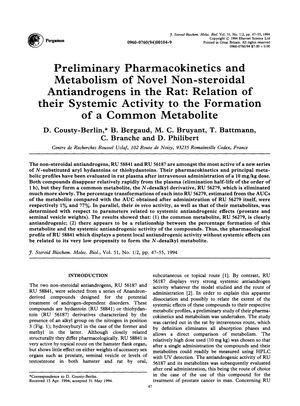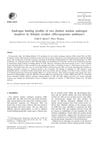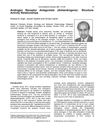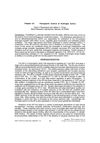Preliminary Pharmacokinetics and Metabolism of Novel Non-Steroidal Antiandrogens in the Rat: Relation of Their Systemic Activity to the Formation of a Common Metabolite
October 1994
in “
The Journal of Steroid Biochemistry and Molecular Biology
”

TLDR Two non-steroidal antiandrogens, RU 58841 and RU 56187, form a common metabolite at different rates, which may influence their effects; RU 56187 could be used for prostate cancer treatment and RU 58841 for acne treatment.
In 1994, a study was conducted on the pharmacokinetics and metabolism of two non-steroidal antiandrogens, RU 58841 and RU 56187, in 4 male Sprague-Dawley rats. Both compounds were found to form a common metabolite, RU 56279, but at different rates (1% and 77% respectively). RU 58841, with potent local antiandrogenic activity and minimal systemic effects, had a low propensity to form the N-desalkyl metabolite, suggesting a link between metabolite formation and systemic antiandrogenic activity. RU 56187, showing strong systemic inhibitory activity on accessory sex organ weights, was suggested for prostate cancer treatment, with its systemic activity potentially mediated by its metabolites, especially RU 56279. Conversely, RU 58841, a potent topical antiandrogen with weak systemic effects, was suggested for acne treatment. The study concluded that the differing effects of RU 56187 and RU 58841 could be related to their metabolism extent and the proportion of the common N-desalkyl metabolite formed.




